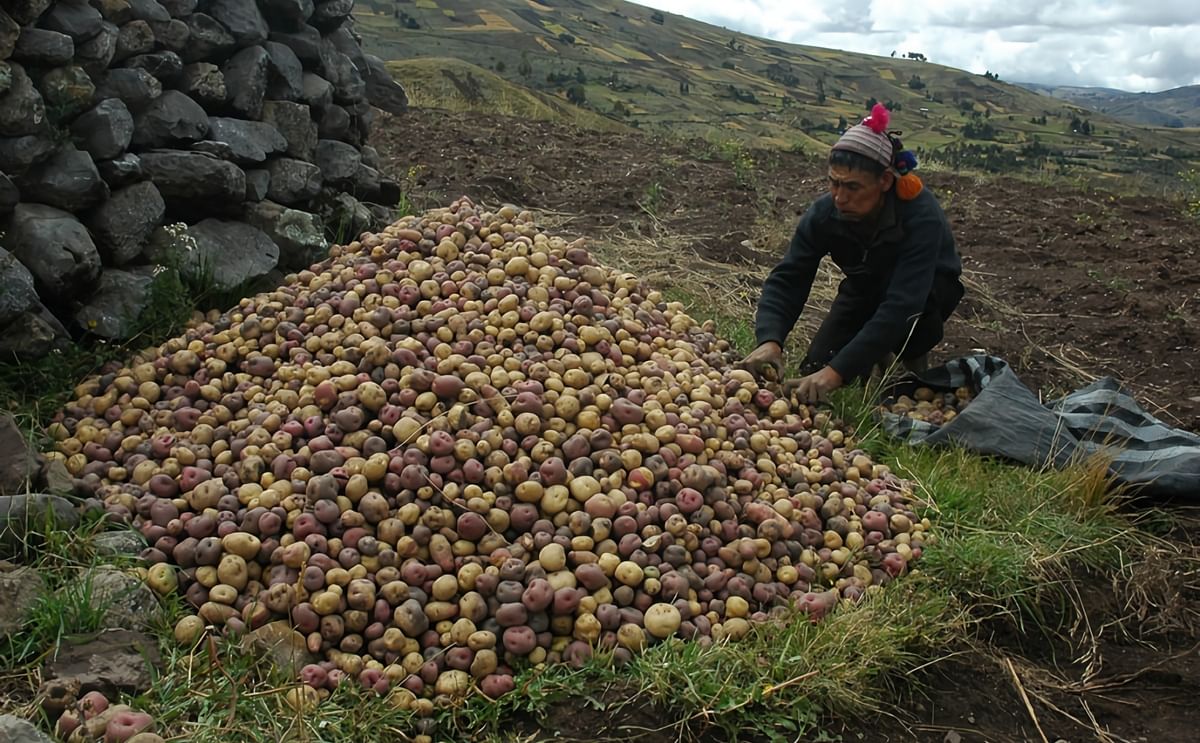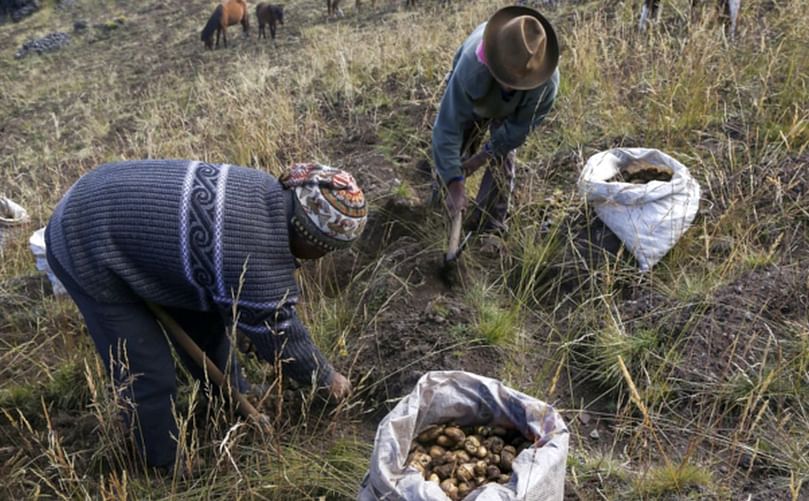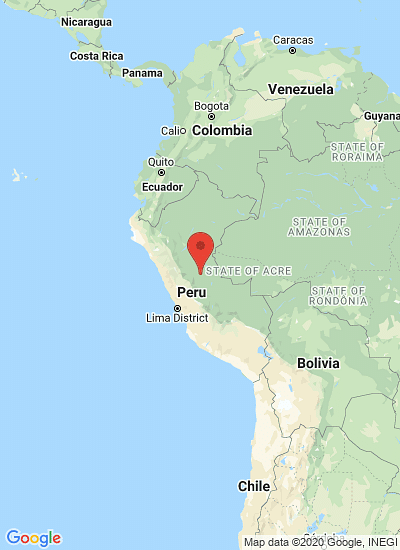Under COVID, food systems in Latin America are looking inward for support
Under COVID, food systems in Latin America are looking inward for support

Scientists at the International Potato Center (CIP) are shifting their focus to the long-term effects of COVID-19 to anticipate and understand how food systems may be impacted in the coming years. Beyond the immediate effects of COVID-19 on human health and mobility, longer-term concerns point to possible scenarios of food scarcity in developing countries.
To understand how COVID-19 is affecting food systems in Latin America and the Caribbean, we had a virtual sit-down with Stef de Haan, Agri-food Systems Senior Scientist at CIP headquarters in Lima, and Israel Navarrete, a junior research assistant based in Quito, Ecuador.
Both men said the harvest south of the equator had been very good this year and that bounty was staving off the short-term effects of COVID-19 on food availability. However, they are already thinking of ways that governments and civil society groups can lend their expertise and resources to farmers and families who may struggle after this season.
They spoke with Managing Editor, Christopher Butler, about these issues and more.
In Latin America, what challenges to food systems have you most concerned at the moment?
De Haan:
“Food systems are becoming much more reliant on shorter networks and food supply chains. This means logistical challenges of getting food to the city, which is, of course, affecting the profitability of food companies. This is happening all over Latin America. This is affecting prices and food is not necessarily getting to everyone who needs it.”
“ Distribution from wholesale to retail usually happens at night and now, with nightly curfews in place, they must find acceptable times. This creates price distortions: fruit and vegetable prices are going up. But prices being paid to farmers are, in many cases, going down.”
Due to mobility restrictions, food systems in Latin America are looking inward to see what other foods are available that have been previously overlooked in favor of cash crops. This dynamic could lead to the revival of forgotten indigenous foods.
The main concern, for now, is to support and strengthen national food systems. Poor and vulnerable people living in the cities are majorly exposed, such as Venezuelan refugees who are off official radar screens.
And there are also many internal migrants throughout Latin America who are not being tracked so we don’t know how they are faring with the effects of COVID.
They come from the countryside and are not registered in the cities where they live. So, they do not qualify for the emergency relief to which residents have access. This has forced many migrants to try to go back to their home communities

The return of migrants to the countryside means additional labor for growing and harvest. But it also means more resources consumed in already struggling households.
Navarrete:
“In Ecuador, some people in rural areas, such as fishing communities, have not been allowed to continue working. So, they cannot sell their fish on the coast. This makes people living in coastal areas vulnerable, too. But we don’t see that because they are not in the city.”
De Haan:
“In Peru, there is a policy now that allows all operations related to food production and logistics to continue. Those in registered employment can take advantage of that policy.”
“But many people work in the informal economy, part of the important informal food production network, such as traditional markets or individual truck owners who are not registered… those people are affected.”
“Moreover, informal food retail for example at popular markets is generally more available and accessible for vulnerable populations.”
Navarrete:
“We need to close these gaps between formal and informal networks. We need to adapt our protection systems to meet the needs of informal producers and transportation workers.”
De Haan::
“The role of CIP is to use our research capacity to understand how this crisis is affecting people in the food system and to provide policy advice to our government partners.”
What is happening in Andes right now with the spread of COVID?
Navarrete:
“Like all rural areas, moving food in and out is a major issue. I wouldn’t say there is food insecurity yet, but people there are very vulnerable. In Ecuador, we have three or four big cities that are highly dependent on food from rural areas. But of greater concern are the people in the informal economy who are paid at the end of each day.”
“For medium-size farmers, many are unable to sell into big markets now. I was talking to an onion farmer who has products to sell, but he doesn’t want to leave his village for fear of increasing his exposure to COVID. So, he has abandoned those crops.”
De Haan:
“Last week, I took part in several interviews with farmers to assess what is going on in the Andes. Many people are returning to their villages, even though the government is trying to stop it. But people are using old footpaths that the government can’t patrol. Rural villages are becoming a kind of safety net and at least there is food there for now.”
“In Peru, this has been a good year for agriculture. In the countryside now, it is harvest time. So, the influx of people is being met with a lot of food. That’s good. But there are labor shortages in some sectors. This is the case in the coffee-producing areas of northern Peru, as it is for farmers with larger plots of potatoes. Both groups have struggled to find the labor to help harvest their crops.”
“Prices are of certain products are falling. In Peru, prices of potato varieties used in the fast-food sector are falling because there’s no demand for French fries and other products. Many farmers have been left with produce. Conversely, some families with strong networks in the cities have been able to leverage their support to shift their business model to include home delivery.”
“Government distributions of food and cash benefits have been helpful, but farmers have had to travel to the cities to their banks to get the money, and this increased their exposure to COVID-19 standing in line. For the next round of food distributions, the authorities will bring the goods to villages, which will be better.”
Schools have been closed since November last. Even though there have been efforts to organize lessons through TV and the internet, the reality is that many students do not have the capacity to pursue their education this way. For instance, they need a greater level of support or they do not possess their own laptops.
Navarrete:
“There are some bright spots that are worth mentioning. Agro-ecological organizations and grassroots groups have been doing great work. They are working in communities to partner with local governments to organize the distribution and delivery of food. That’s something that is important to underline – the power of civil society groups to mitigate food insecurity in certain areas.”
De Haan:
“In the first round of government-organized food distribution, there was lots of processed food – tuna and spaghetti. But now in some of the regions, including the potato regions, food assistance programs are now buying local produce. There is more reliance on what’s locally available.”
Navarrete:
“I have found myself playing the role of intermediary in connecting farmers with NGOs and field technicians who can provide the inputs they need right now because usual supply chains have been disrupted.”

The endogenization of food systems in the Andes has created opportunities for grassroots agro-ecological organizations to assist farming families, fostering stronger ties with local communities. This change could inspire a greater focus on sustainability and agro-biodiversity.
What kind of changes in agriculture and food consumption patterns are you seeing in this region?
De Haan:
“Production itself has not changed, because the COVID-19 outbreak happened in the middle of the growing season. Prices and labor availability are big issues. In terms of consumption, we have seen a large rise in local foods being consumed.”
“The other day I was speaking with the leader of the Association of Guardians of the Native Potato from Central Peru (AGUAPAN) and in his community, he said they had run out of oil and rice so they were eating everything they produce.”
Navarrete:
“I appreciate the renewed focus on local foods. Normally, if you have everything you want to have, you say 'I'll eat my rice and pasta and whatever I have.”
“But this is not possible at the moment, so you explore what is available locally — the foods your grandparents used to cook. So, communities are getting reacquainted with local knowledge.”
How will COVID and its aftermath affect seed systems?
Navarrete:
“I expect that local seed systems will reorganize to become more focused on families and neighbors. Rather than using markets for seed, farmers will look locally for sources. This flexibility with farmer networks would limit the entrance of new seed-borne pathogens into their communities.”
“In Ecuador, reciprocity practices have an important role to play in the seed system. For instance, the practice of 'racion,' in which people receive part of the harvest for contributing labor… this idea can be used for seed as well.”
However, at CIP, we need to do more research to determine when farmers need to renew seeds or replace varieties.
De Haan:
“Because this has been a good agricultural year, we may not be seeing the problems down the road. Right now, there is an abundance of seed. Usually, seed shortages follow events like extreme weather or pests. But now because production has been good, there will be plenty of seed, in principle.”
“But now many urban migrants are returning to their communities. One can already hear that they plan to stay there because there is no work in the cities. Local kinship, as Israel mentioned, will become very important.”
“During and after COVID, we will need to organize an emergency distribution of seed, just as we have done with food. I think CIP has a particular role to play here to advise government agencies and NGOs on how to develop seed interventions. Typically, after a crisis, when governments buy seed, they tend not to buy seed for farmer-preferred varieties.”
“We've seen this in the past when the government distributes seed, farming communities prefer to eat it rather than planting it because the seed does not come from a trustworthy source or because they don't like the variety. There is an opportunity to promote 'virtual' seed fairs to take advantage of the strength of informal seed provision and landrace diversity.”
“This year we’ll have the opportunity to organize emergency seed relief to promote a greater level of awareness of the rich agrobiodiversity in the country and the exchange of local seeds within communities. With the increased demand for seed, people will also be more willing to try new varieties.”







